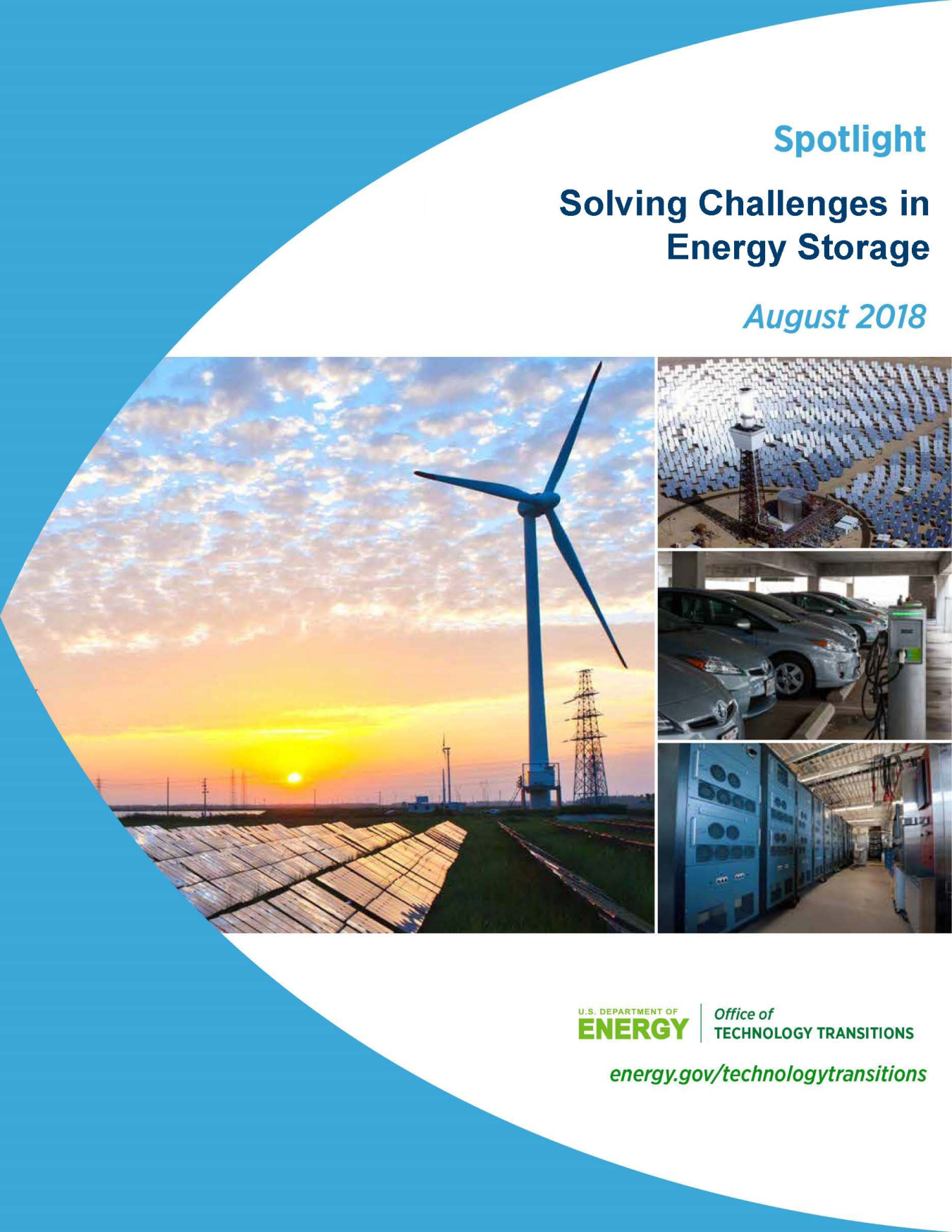The Spotlight: Solving Challenges in Energy Storage, a new publication from the U.S. Department of Energy’s Office of Technology Transitions.
Office of Technology Commercialization
September 24, 2018Energy storage technology is changing how the world powers its homes, buildings and vehicles — and the emerging new commercial opportunities are staggering. Shining a light on the topic, The Spotlight: Solving Challenges in Energy Storage from the U.S. Department of Energy’s (DOE) Office of Technology Transitions (OTT) is showcasing for today’s energy investors and innovators the latest on energy storage and related activities at DOE and its National Laboratories.
Global energy use could be transformed by low-cost and reliable ways to store energy generated by renewable energy sources. Electric vehicles (EV) with more responsive batteries could transform an industry just as gas lighting gave way to electricity and horses were overtaken by the automobile.
A critical key to all of these advances is the DOE and its complex of National Laboratories providing extensive scientific expertise, technologies and highly specialized facilities. Collectively, these assets play a vital role in ensuring the United States maintains science and technology leadership in a dynamic global economy.
Over $1.6 billion in DOE investments in early-stage research starting as far back as 1992 have led to impressive advances in energy storage technology.
The results are striking so far:
- From 2010 to 2016, utility-scale battery installations jumped from less than five MWs to over 190 MWs. That’s enough stored energy to power 190,000 homes.
U.S. EV sales have jumped from 17,400 in 2011 to over 200,000 in 2017.
Lithium-ion batteries, which now dominate the EV and consumer electronics industries, have seen an 80 percent cost reduction since 2008 due to technological advances.

In addition, DOE is developing new chemistry and cell technologies to make EV batteries more affordable (under $100/kWh,) increase vehicle range to over 300 miles and reduce charging times to under 15 minutes.
The National Labs engage with industry to move to market the valuable technologies that arise from DOE's research efforts. To streamline these possibilities, DOE has developed Intellectual Property (IP) bundles of complementary energy storage IP, expertise, and capabilities across multiple DOE National Labs. These are available for license, and information on these bundles can be found in the Spotlight. The Spotlight also showcases 21 individual energy storage patents available for licensing.
To make the National Labs more accessible, the Lab Partnering Service provides energy investors direct, no-cost access to lab energy experts, project marketing summaries and the ability to use keyword searches to identify energy patents addressing their specific needs.
Other DOE resources highlighted in the Spotlight include summaries of Energy I-Corps which partners lab researchers with industry mentors to develop viable market pathways for lab-developed technologies, and the Technology Commercialization Fund which leverages DOE funds in public-private partnerships to mature and commercialize promising lab-developed technologies.
The DOE National Labs actively seek partners as part of a broad approach to commercialize solutions to our most pressing energy challenges. The Spotlight is the first in a series of technology-focused publications providing innovators and investors with greater visibility in and access to the National Laboratories and the treasure trove of assets available.
Follow this link to download the Spotlight.
For additional information, visit energy.gov/technologytransitions
The Office of Technology Transitions develops DOE’s policy and vision for expanding the commercial impacts of its research investments and streamlines information and access to DOE’s National Labs, sites, and facilities to foster partnerships that will move innovations from the labs into the marketplace.

